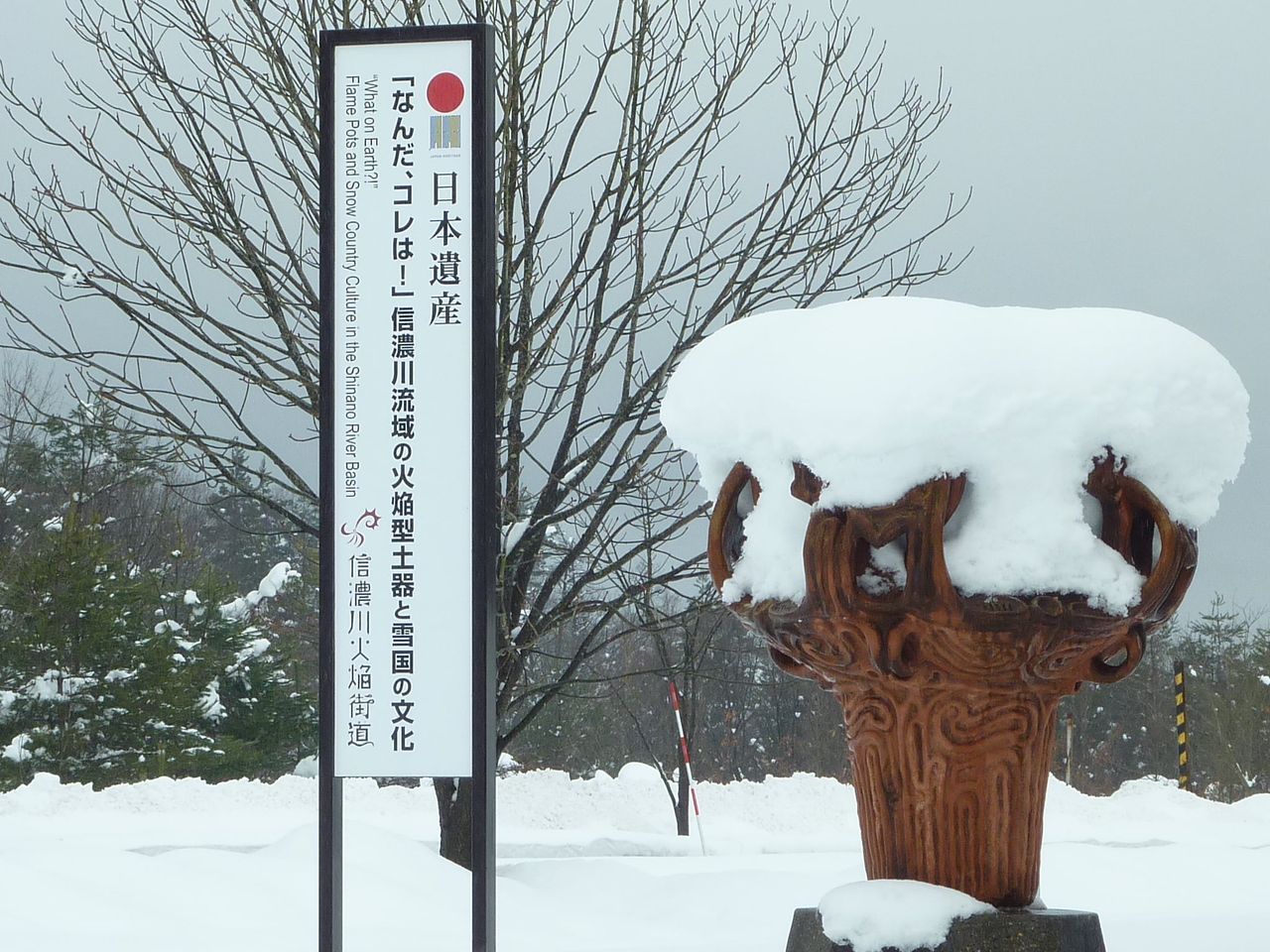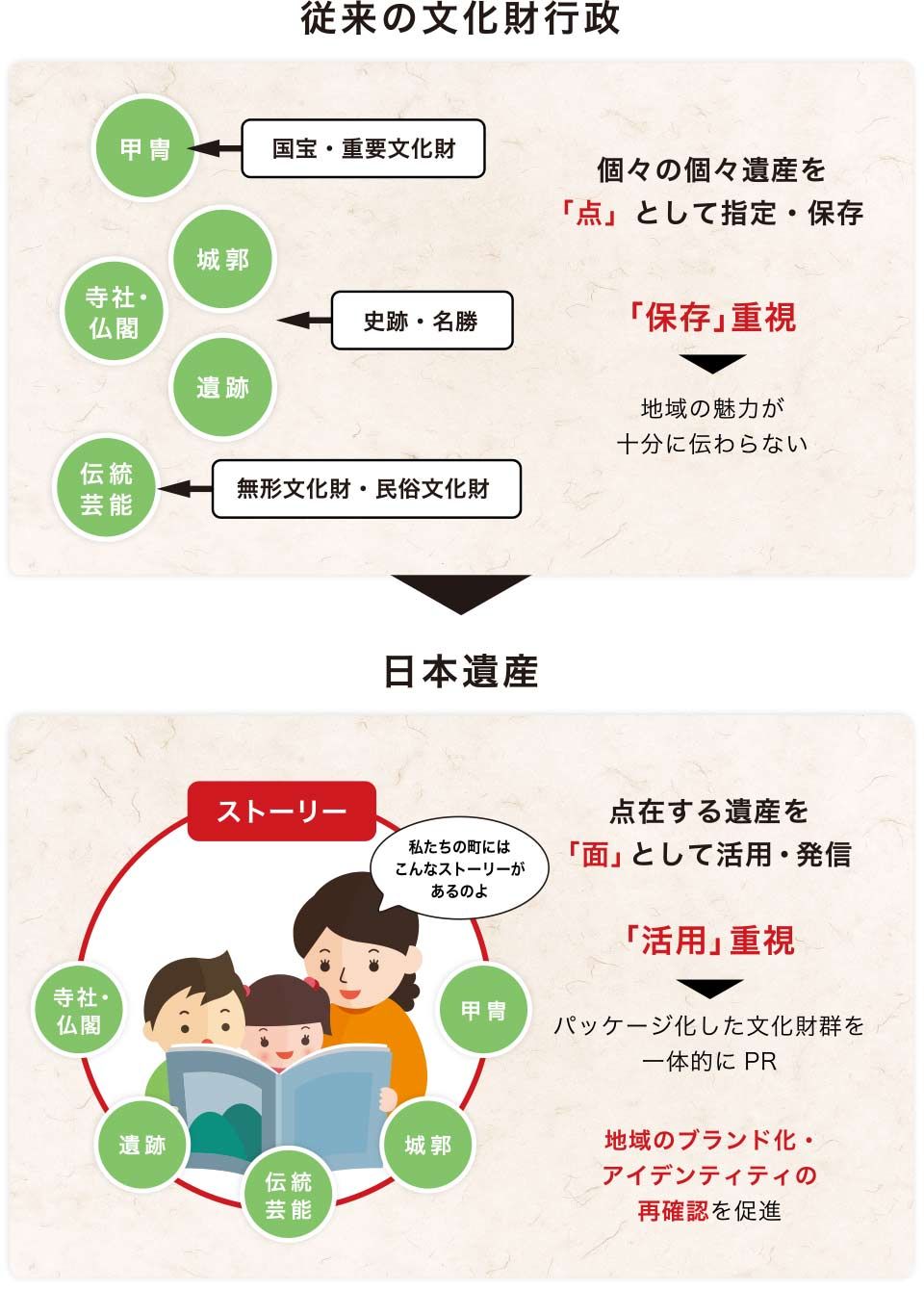Chat丨Japanese Heritage and Boundary Cultural Properties
The first write in 2021, try the new interface, move the topic shared on Facebook and organize it.
I don't know if you have heard the keyword "Japanese heritage"? Basically, it was created by the Agency for Cultural Affairs of Japan. It will have a heritage certification system with Japanese culture and traditional characteristics that can reflect the local historical and cultural characteristics. In addition to the protection of designated heritage, the designated heritage actually has local activation and transmission of regional characteristics. The meaning can be regarded as the Japanese version of the World Heritage in some ways, but it is actually a different concept.
Taking the Jomon Ruins as an example, there are two Japanese heritage sites (both in the central region): "なんだ, コレは!" in Niigata Prefecture, the fire-fired pottery and the culture of the snow country in the Shinano River basin , and the stars in Nagano and Yamanashi prefectures Descending into the world of 縄文 of the Central Highlands . In many local tourist information, it is not difficult to see the publicity of Japanese heritage, and the designated registered heritage sites will also have a signboard for the identification of Japanese heritage.

However, the Agency for Cultural Affairs of Japan is preparing to decide on Christmas Day before the New Year’s Eve in 2020. In 2021, Japan’s heritage will move towards the introduction of the cancellation system of heritage , and the registered heritage that is ineffective (such as low number of visitors, low rate of related talent cultivation, etc.) will be eliminated. Etc., in terms of super translation, the KPI effect is too low), and then the number of Japanese heritage registrations is expected to be maintained at about 100, and a heritage supplement system will be added to allow new heritage to be added. That's why, on Christmas Day before the New Year's Eve, my Twitter friends swiped a row of #JapaneseHeritage discussions, which caused a wave of discussion.
(Additional: The well-known world heritage also has provisions for the cancellation of heritage identification, but the status of cancellation depends on the degree of threat to the registered heritage, such as natural disasters, war conflicts, major engineering development, and surge in tourists. and so on directly affect the preservation and maintenance of heritage.)
In response to the report on Japan's heritage cancellation system, a Twitter user said directly: "Japanese heritage is not just a system for 'protection', it is a business that actively revitalizes cultural properties, and there is no need to make a fuss." Others thought: " In this case, it would be better if the heritage recognition system was simply moved from the Agency for Cultural Affairs to the Tourism Agency." However, from the perspective of Japanese heritage, I have to say that the comments of netizens are very sincere (?):

我が国の文化財や伝統文化を通じた地域の活性化を図るためには, その歴史的経緯や, 地域の風土に根ざした世代を超えて受け継がれている伝承, 風習などを踏まえたストーリーの下にIt is necessary for tangible and intangible cultural properties to be transformed, to utilize them, to develop information, to develop human resources, to inherit, and to improve the environment.
The implementation direction of Japanese heritage can be divided into three points:
First, grasp the status of local cultural properties and package them with stories.
Second, the cultural property shall be maintained and utilized by the locality as a whole.
Third, actively carry out strategic and effective promotion at home and abroad.
"Japanese heritage" seems to reflect Japan's attitude towards the practical revitalization of heritage.
However, following the news of the Japanese heritage, the Asahi Shimbun published a report on "Limited Cultural Properties", which also caused a lot of discussion. I think it's worth thinking about.
"Limited Cultural Property", who is Guarding?
In Japan, there is a term called "boundary colonies", which refer to marginal areas, villages or communities in Japanese society that are remote, small, aging, have difficulty in transportation, and may even disappear. In the protection of cultural heritage, the term "limited cultural property" has also appeared. Akiro Miyamoto, an expert in the restoration of cultural properties, describes those forgotten cultural properties as "limited cultural properties". This news takes the image of the god of thunder found in the abandoned village of Yamagata as an example, which was exhibited by the team of painter Natsunosuke Miki during the Yamagata Art Season ("みちのおくの Arts Festival Yamagata ビエンナーレ 2020"). Faced with the protection of cultural heritage in disappearing areas.
When the population is excessively concentrated in the city, the overall population is decreasing, and the ageing and other real situations appear, from the space for preservation and maintenance, the funds to the cultivation of talents, where should the cultural heritage (whether tangible or intangible) go? Who should be responsible for the preservation and maintenance? Should it be preserved locally, or should it be centrally managed by areas with a large population concentration? Or will it simply go back to dust in the end?
Nowadays, in the face of cultural heritage, it is actually difficult to simply preserve and protect it. More often, it involves many practical considerations, such as local revitalization, revitalization, income from tourism, etc. issues to be faced. In recent years, Japan's cultural heritage management trend and the tourism strategy driven by the hosting of the Tokyo Olympics have paid more and more attention to the activation and utilization of cultural heritage, and cultural heritage has gradually become a "resource" waiting to be developed and utilized.
The successive appearance of these two discussions cannot provide a solution, but it reminds us of the reality and neglected aspects in the protection and utilization of contemporary heritage. There are bright and splendid cases of heritage activation, and there must be many things that we can't see.
Afterword:
I have been paying attention to the news of Japanese cultural heritage intermittently. In recent years, I have looked back at the situation of the Japanese local exhibition halls that I have experienced in the past. Unconsciously, it has become a real example. Those are not simply resources or policies. can be changed directly. We hope that while advocating and imitating Japan, we can also keep in mind the issues that Japan is facing.
Like my work? Don't forget to support and clap, let me know that you are with me on the road of creation. Keep this enthusiasm together!



- Author
- More